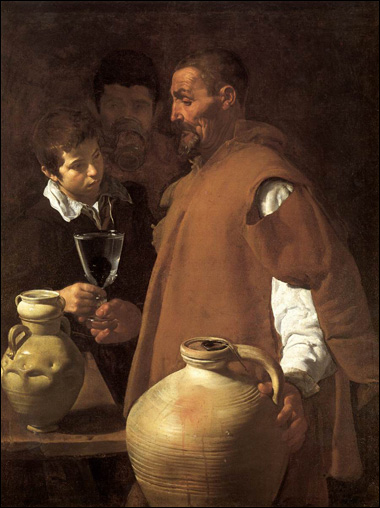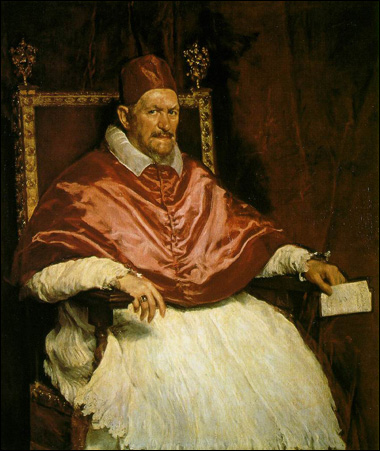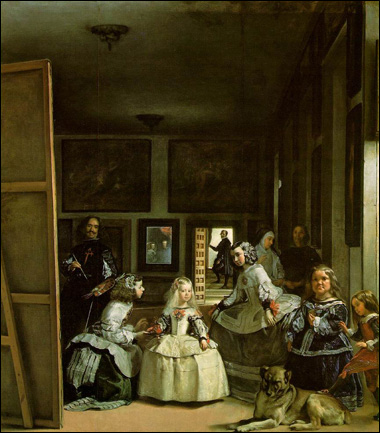Today’s historical artist is Diego Velazquez, a court painter (mostly of portraits) for the king of Spain in the 17th Century.
Born in 1599 in Seville, Diego Velazquez showed an early ability for art, and was apprenticed to become a painter. By his early twenties he was already a successful painter in Seville, and Velazquez was called to the court of King Philip IV of Spain where he quickly became the official painter of the king.
However, Velazquez didn’t restrict his work JUST to the king and his courtiers. He also painted ordinary people—street peddlers, court jesters, and other “common folk”—giving us a sort of cultural snapshot that extended far beyond the royal family.
One such painting by Velazquez is The Water-seller of Seville, a favorite of mine since I first saw it.
There’s an incredible detail and clarity to this painting, with beautiful white areas in the sleeve of the water-seller and collar of the boy that bring a high contrast to the dark black background.
The intense black areas are similar to what Caravaggio began doing just a few years before—and Velazquez’s realism is along the same lines as well, staying true to nature and painting exactly what he saw rather than denying the flaws that make us human.
Diego Velazquez left us many paintings of important figures of his time, as well, and the same honesty is revealed in those as what we see in The Water-seller of Seville.
For example, there’s a sternness present in Diego Velazquez’s portrait of Pope Innocent X that I doubt many other artists would have depicted.
Papal portraits (and those of kings and royalty) rarely strike so close to the truth since pleasing the sitter often becomes the highest priority. But the Pope approved of it, and the portrait has remained for many years a powerful testament to Diego Velazquez’s skill.
This last painting, however, is considered Velazquez’s greatest and most intriguing work: Las Meninas.
More than ten feet tall and approximately nine feet wide, it contains eleven figures, not counting the dog, but including the reflections of the king and queen of Spain in the back of the room.
It’s a most unusual portrait, and the questions surrounding its existence is what makes this painting so interesting.
Who was the portrait’s true subject? The child in the center, the princess of Spain? Velazquez, seen holding a palette and brush on the left hand side? Or the barely visible royal couple?
Velazquez no doubt loved the wide range of subjects, allowing him to combine both servants and royalty (and himself!) into one painting. More than that, in looking at the painting it’s as though we the viewers are seated on the throne ourselves!
However the painting came about, whether by the king’s request or as one of Velazquez’s own ideas, it’s truly an impressive work. It’s also one of Diego’s last, painted near the end of his life.
After being knighted by the king in 1559 (indicated by the red cross on his chest in Las Meninas) and having served almost 40 years in the Spanish court, Diego Velazquez died in 1660.
This post may contain affiliate links.



